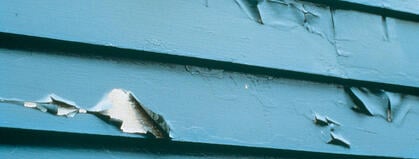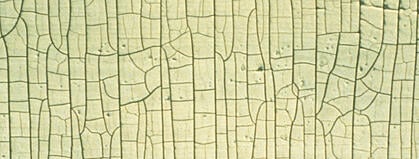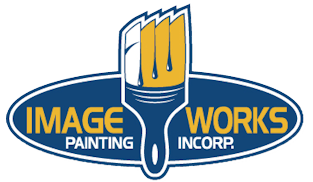There are a number of things that can affect the beauty of the paint film on the exterior of your home. Your house takes a lot of abuse from the elements – from sun to rain to snow to hail.
Long term exposure to any of these conditions can lead to paint failure, but knowing how to identify the cause of the problem will allow you to solve it the proper way so you can keep your home looking beautiful and protect your investment.
In this article we’re going to highlight a few of the more commonly seen exterior house painting problems and discuss the best ways to fix them.
The Problem: Peeling
The Causes
- Old Paint – New coats of paint will only stick as well as the old coat(s) of paint they’ve been applied over. Probably the most common reason we see peeling is due to insufficient scraping of the old coatings before applying new coatings.
- Moisture – If water finds its way behind the paint film it will usually cause peeling as it’s trying to find its way out.
- No Primer – If the most recent paint coating was applied directly over bare wood or an extremely glossy surface it can cause a loss of adhesion between the paint and the substrate it’s being applied to.
The Solutions
- Pressure-wash, Scrape, & Sand – Pressure-wash to clean the surface and remove any loose or peeling paint. Scrape any remaining peeling areas and feather the edges with sandpaper or an electric sander.
- Dry It Out – Make sure that there are no leaks in the gutters or the roof, that the surface is clean and dry, and that all of the cracks and butt joints in the siding are well-caulked.
- Primer Before Paint – There are some situations where a primer is necessary and some situations where it isn’t. Check out our Priming Blog to learn when to use a primer.
The Problem: Blistering
The Causes
- Moisture – The main cause of this problem is exposure of the paint coating to dew, high humidity, or rain shortly after drying.
- Contamination – Painting over top of a surface contaminate such as dirt, grease, etc. can cause a loss of adhesion and cause this symptom.
- Heat – Excessive heat can cause problems with freshly applied paint when it’s put over a surface that’s too hot, usually due to prolonged exposure to direct sunlight.
The Solutions
- Scrape, & Sand – Hand scrape the blistered areas to remove any paint that is not well-adhered to the surface. Feather the edges with sandpaper or an electric sander.
- Don’t Push It – Avoid the temptation of painting late into the evening when the dew will soon be settling in, or too close to the time when rain is expected.
- Clean It Up – Always clean the surface well with a stiff-bristled brush or a pressure washer, and be sure to use a good pre-paint cleaner/degreaser.
- Use Good Judgment – When painting the exterior of your home try to focus on the sides of the house that are not in direct sunlight. If the surface feels extremely hot to the touch, skip it and go to another side of the house.
The Problem: Alligatoring
The Causes
- Oil-Based Paint – This is a condition that’s unique to oil-based paint. Although the use of oil-based paint is not as common these days, at one time it was widely used. Oil-based paints are not nearly as flexible as their commonly used cousin, acrylic latex. As the oil coating ages it often will split and crack because it can’t expand and contract with the surface beneath. Sometimes this condition happens quickly when new oil-based paint is applied over a flexible coating.
The Solutions
- Out With The Old – Remove as much of the old oil-based coating as possible by whichever method you prefer (i.e. hand scraping, chemical paint stripping, etc.)
- In With The New – Replace the oil-based coating with a 100% Acrylic Latex paint. Be careful when applying latex over oil as adhesion of the new to the old can sometimes be an issue. If the old coating is glossy consider creating a “profile” on the surface for the new paint to stick to by scuff-sanding it with sand paper or an electric sander, and/or consider the use a primer that will bond well to the old coating.
To learn about more exterior house painting problems visit the Paint Quality Institute's website for additional information.
To schedule a free consultation of your painting project by one of our paint experts click on the link below.

Photos courtesy of the Paint Quality Institute











